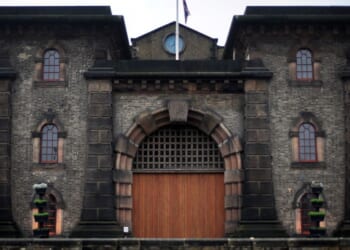Restoration efforts at the Palace of Westminster have revealed prehistoric stone tools dating from approximately 4300 BCE, providing evidence that humans occupied the location nearly six millennia ago.
This timeline places activity at the site before the construction of famous prehistoric monuments like Stonehenge.
The discoveries emerged during archaeological work connected to Parliament’s Restoration and Renewal programme.
More than sixty pieces of worked flint, including a crafted implement, were recovered from pristine sandy layers deep underground.
These artefacts from the Late Mesolithic or Early Neolithic era provide surprising insights into ancient human presence in central London’s modern political centre.
The stone tools were discovered in the area formerly known as Thorney Island, preserved within sandy deposits that had remained undisturbed for thousands of years.
Archaeologists believe prehistoric groups utilised this location for resource procurement, including fishing and hunting activities.

The discovery was made at the Palace of Westminster
|
GETTYThe exceptional preservation of these flints in pristine sand layers makes them particularly significant finds.
Their discovery highlights the strategic value of this Thames-side location millennia before it developed into a seat of royal authority and governmental power.
These artefacts form part of extensive archaeological work being conducted by the Museum of London Archaeology across nine different locations within the Parliamentary estate.

These artefacts form part of extensive archaeological work being conducted by the Museum of London Archaeology across nine different locations within the Parliamentary estate
|
RESTORATION AND RENEWAL DELIVERY AUTHORITY
Archaeological teams have also unearthed artefacts from various historical periods throughout the excavations.
Medieval leather items, including a complete boot and multiple shoe soles from approximately 800 years ago, provide glimpses into daily life during that era.
A Roman altar fragment, over 2,000 years old, appears to have been incorporated into subsequent construction.
Decorative items include a medieval lead badge shaped as a flowering heart and an ornate floor tile whose pattern influenced Victorian reconstruction designs.
A substantial Victorian beer vessel with five-pint capacity has connections to a historical London publican.
Ornamental clay tobacco pipes from the 1834 rebuilding likely belonged to craftsmen reconstructing the Palace after the fire.
In August 2025, excavators made a remarkable find when they located substantial remnants of the medieval Lesser Hall, also known as the White Hall.
Built in 1167, this structure served initially as a royal dining facility before hosting various administrative functions, including accommodating both Parliamentary chambers during different periods.

David Brock, head of the Government Historic Estates Unit at Historic England, said: ‘The initial finds from archaeological investigations confirm the richness of Westminster as a site. They testify to the variety of human experience on this site’
|
GB NEWS
Historians had assumed the 1834 fire completely destroyed the hall, but fresh evidence reveals that stone wall sections not only survived the blaze but underwent repairs and stood until the mid-nineteenth century.
David Brock, head of the Government Historic Estates Unit at Historic England, said: “The initial finds from archaeological investigations confirm the richness of Westminster as a site. They testify to the variety of human experience on this site.
“The locating of the Lesser Hall walls is particularly exciting. As this work continues, we hope it will further expand our understanding of the surviving Medieval buildings, especially Westminster Hall, and that the discoveries will enrich our knowledge of this World Heritage Site.
“It must also pave the way for a sensitive response to the site’s past when proposals are made for the restoration and renewal of the Palace.”
















